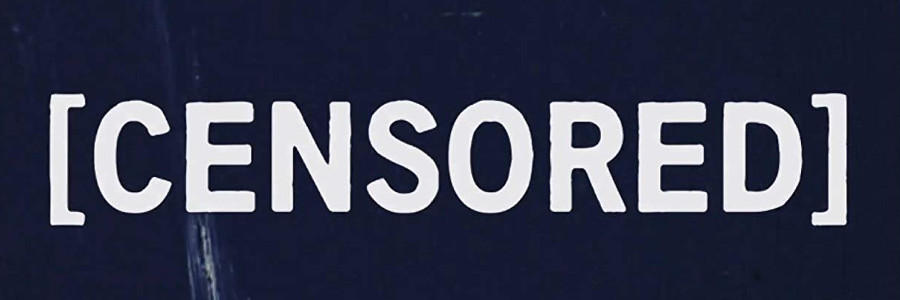In 2014, filmmaker and archivist Sari Braithwaite was working on a short film that required access to a collection of censored footage from 1991 films dated 1958 to 1971.
Scanning through the collection, Braithwaite was immediately entranced. Much of what she saw was relatively benign by the standards of the 70s, let alone today. It didn’t seem right to let these fragments of footage fade to dust on the shelves of a government building. So, it was decided, she would liberate them!
It wasn’t long before she was asking herself whether she’d made a huge mistake.
[CENSORED] is the result of Braithwaite’s struggle to determine whether she’d made the right decision. It starts out innocuous enough. A few kisses that might be a little too passionate. Bob Dylan swearing up a storm because someone threw a bottle out of his hotel window. Braithwaite understands.
“They were following procedure, wielding power by enforcing simple, moralising rules.”
Then it starts to escalate, introducing scenes of domestic violence, extreme sexuality, and cultural insensitivity. Shown continuously, it is uncomfortable, the impact by no means lessened due to the outdated cinematography or editing.
Braithwaite does a great job of structuring [CENSORED] in such a way that it never feels dulled or repetitive. Accompanied by a flowing jazz score, the segments – book-ended by sections of policy or censorship decisions from the Australian Censorship Board – each play a role in analysing the question Braithwaite is asking not just the audience, but herself: what is it we are choosing to be spectators to?

It’s an important question, but not one best asked solely in the context of censored clips. Such presentation only allows for presumption of the creator’s intent, and that is simply not enough to determine whether a decision to censor content is a reasonable one. Besides a sequence that shows the birthing process in explicit detail, none of the footage is presented in a way that makes Braithwaite’s guilty admission she felt she was “liberating a state-sanctioned spank bank” feel quite justified.
That’s not to say audiences won’t be repulsed as they watch a series of scenes in which men spy on naked women, or abuse them, or assault them. How could they not, especially when the collages run for minutes at a time? The question that’s not being asked, however, is whether or not that was the creator’s intent all along.
Braithwaite, having been watching such disturbing footage over a number of years, seems to struggle to keep that in mind at times. When she declares the archive “a distilled collection of male fantasies, imaginings, and desire” there’s nothing in the scenes themselves to suggest she’s wrong. Yet neither is there anything prove her right. In and of themselves, they are nothing more than a discarded piece of something far greater than those few moments can often illustrate. Are these men heroes or villains? What is their motivation? Do they get their comeuppance? We simply do not know.
Whether she agrees now or not, Braithwaite has made the right decision to produce [CENSORED]. Censorship is a vast and complex issue (you need only look at just how many films censored or banned in Australia since 1912 are now available in full to realise just how complex it is), and the conversation about its relevance now and in the future is an important one.
—
[CENSORED] screens March 2nd as part of ACMI’s Documentary Showcase. The screening will feature a live score by ensemble jazz band The End.
Click here to book your tickets now.
